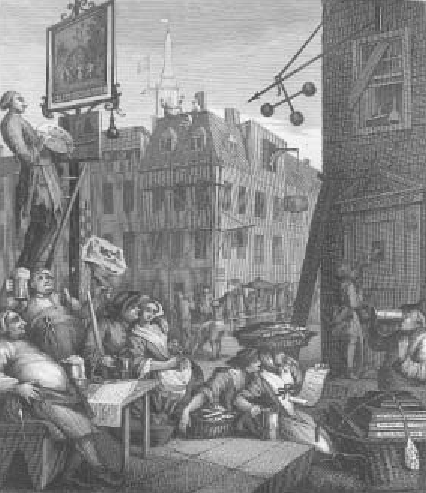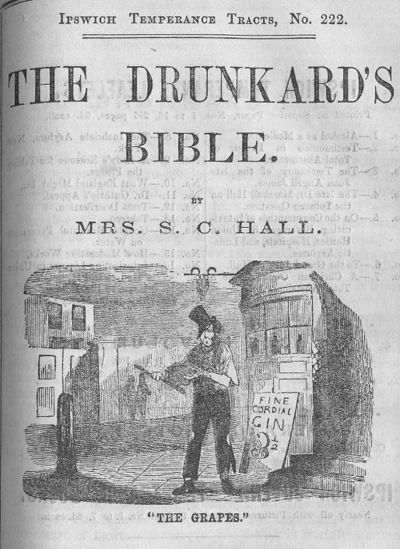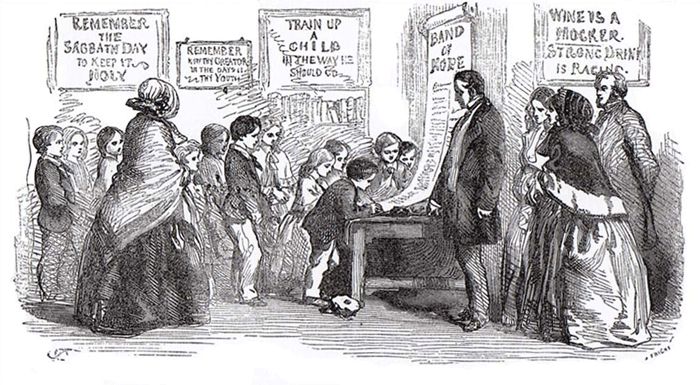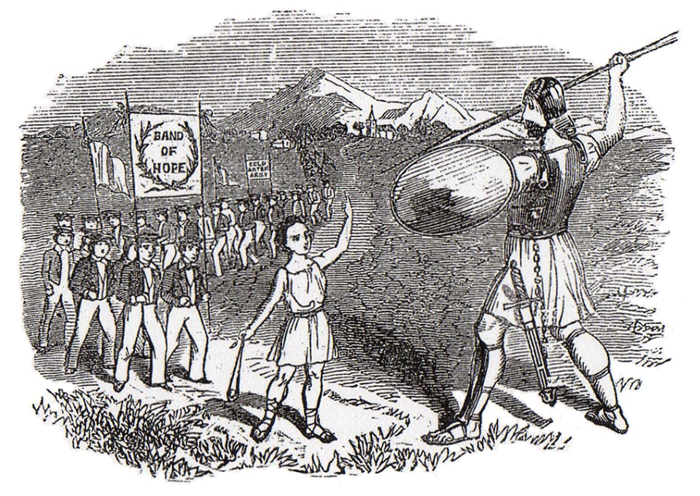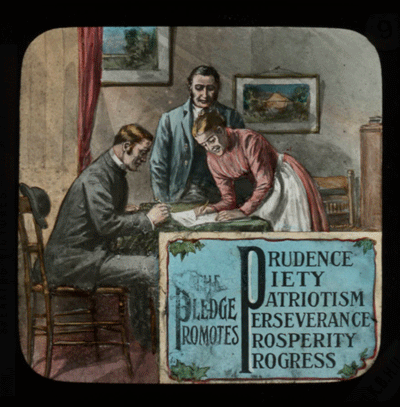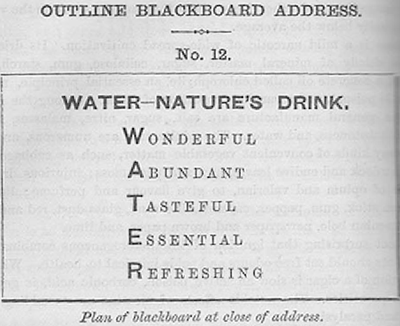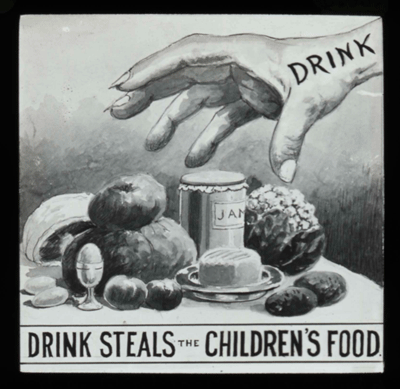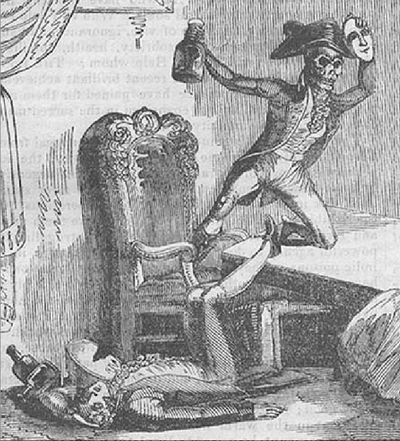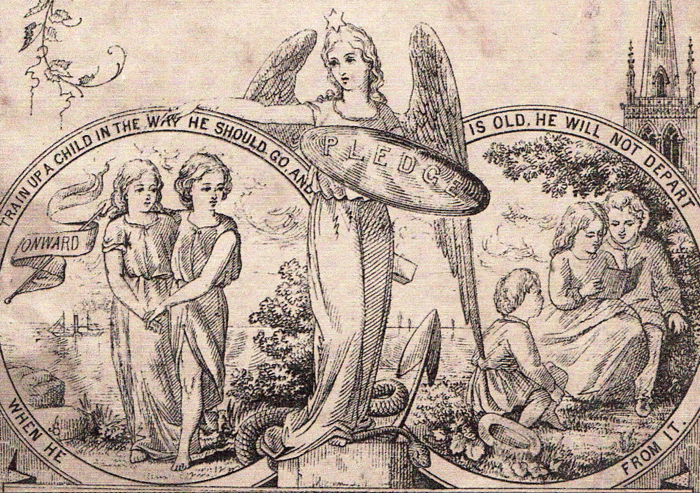Abstract
Temperance movements in Britain developed in a parallel, but significantly different, direction to those in the United States. Although there was a desire to control drinking by legislation, moral suasion was much more central and tended to fall into particular categories of argumentation. The discourses of temperance drew on religion, but developed their own categories, myths, and iconography, verbal and visual. An appreciation of this propaganda leads to a greater understanding of the landscape of popular culture in Britain in the nineteenth century.
In reaction, many joined existing Temperance societies, but it was in ![]() Preston, in the heartland of the industrial North West, that seven men signed a pledge of complete abstinence in 1832 that was to change the meaning of the word “Temperance.” Their leader, Joseph Livesey, was a charismatic working-class man who had become a local merchant and social campaigner. His energy, enterprise and gift for publicity ensured that this movement, christened “teetotalism” by one of his companions in 1833, “moved triumphantly south from Preston,” as Brian Harrison declared (Drink and Sobriety 219). Livesey was conscious of his own legend; he called Preston the “
Preston, in the heartland of the industrial North West, that seven men signed a pledge of complete abstinence in 1832 that was to change the meaning of the word “Temperance.” Their leader, Joseph Livesey, was a charismatic working-class man who had become a local merchant and social campaigner. His energy, enterprise and gift for publicity ensured that this movement, christened “teetotalism” by one of his companions in 1833, “moved triumphantly south from Preston,” as Brian Harrison declared (Drink and Sobriety 219). Livesey was conscious of his own legend; he called Preston the “![]() Jerusalem of the teetotalism” and pairs of workers, termed “apostles,” spread the word (Life and Teachings 66). He published many illustrated papers and periodicals to warn of the dangers not only of overindulgence in drink but also of moderation, with powerful visual metaphors such as a rickety bridge or a slippery slope. (See Fig. 2.)
Jerusalem of the teetotalism” and pairs of workers, termed “apostles,” spread the word (Life and Teachings 66). He published many illustrated papers and periodicals to warn of the dangers not only of overindulgence in drink but also of moderation, with powerful visual metaphors such as a rickety bridge or a slippery slope. (See Fig. 2.)
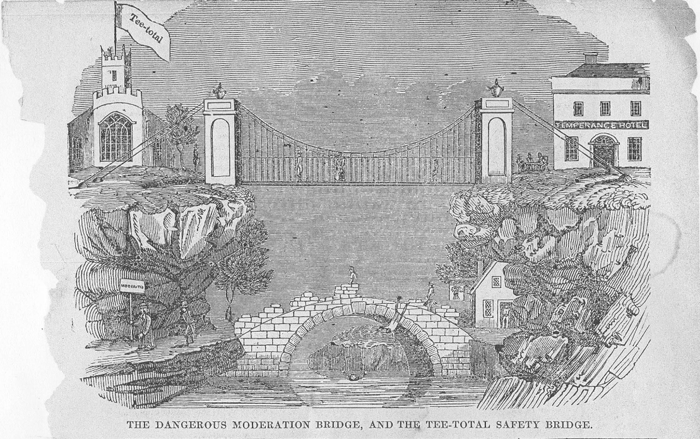
Figure 2: “The Dangerous Moderation Bridge, and the Tee-Total Safety Bridge” from Temperance Picture Gallery, c.1836 (used with permission)
The message of teetotal temperance was disseminated through public meetings and events, but perhaps even more powerfully through periodicals, tracts and associated images. Individual societies such as the Rechabites (founded 1835) and the United Kingdom Alliance (founded 1853) may have had varying specific purposes (respectively, to provide a teetotal friendly society or to press for legal prohibition) but these and other organizations combined to form a movement, a hugely popular pressure group whose three main purposes were to “inspire, inform and integrate,” in the memorable phrase of Brian Harrison (Press 282). Circulation of representations showing drink, its dangers and consequences, and the benefits of abstinence, fulfilled all three purposes, not only acting as propaganda but also integrating readers through the shared tropes of an ‘imagined community’ (Anderson, 1991). One of these tropes, the myth of a single alcoholic drink leading inevitably to ruin, was fixed in a form which influenced much later representation by the artist George Cruikshank in 1847. The Bottle, a set of eight engravings, traces a narrative from the introduction of the fatal bottle to the family dinner table through stages of poverty, violence, murder and madness, and the title to Fig. 3, which is plate 6 of the series, encapsulates the teetotal message.
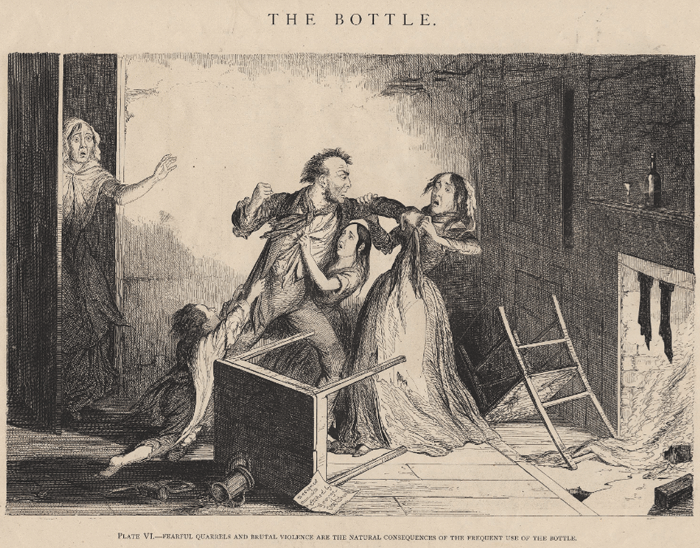
Figure 3: George Cruikshank, “Fearful Quarrels and Brutal Violence are the Natural Consequences of the Frequent Use of the Bottle,” 1847 (used with permission)
All eight images, but this one in particular, influenced later representations and discourses about “the road to ruin.” As well as frequent authorised reprintings, piracy of the illustrations ensured that thousands of viewers became familiar with the story. Prose and poetic versions elaborating on the images were published, and the story was dramatized, at one point playing on eight London stages. The series was such a success that Cruikshank produced another set of eight plates in the following year, The Drunkard’s Children, in which the family’s son and daughter descend in their turn, via theft and prostitution, to their own painful deaths. The essentially propagandist purpose of temperance representations meant that narratives such as these frequently emphasised the sensational, sentimental, and, indeed, the lurid. “Recovery narratives” in which the squalor of drunkenness was explored, but an intervention and the signing of a teetotal pledge redeemed the drunkard’s life, were a characteristic form in the early days of the movement, featuring in many of Livesey’s publications. One of his Preston “apostles” was Thomas Swindlehurst, who claimed the title of “King of the Reformed Drunkards” and used it when advertising his public talks and performances. Some sentimental stories or images of repentance may have been merely anodyne, but material was frequently published that appealed to readers’ desire for the sensational and the dramatic.
As well as the public arena of prints or dramatic performances, temperance stories and images were circulated for home consumption in two main forms, the tract and the periodical. Tracts, a form developed for dissemination of religious and political views as early as the thirteenth century, had by the nineteenth century developed into relatively sophisticated publications that included images, and were published in series, with identified authors. Cover images were often sensational, to attract attention from potential readers. Fig. 4, a tract presented as “The Drunkard’s Bible,” illustrates the uncompromising nature of much of the rather basic imagery. Periodicals, however, presented a much wider and more complex bill of fare, as well as being iterative, thus maintaining a constant presence that confirmed the readers’ shared identity (see Beetham 2006). Circulation figures indicate what a huge market the temperance press created: in 1860–1, for example, the three weekly temperance newspapers had a combined circulation of 25,000, and two quarterly reviews garnered a joint figure of 10,000 for adults; the children’s title, Band of Hope Review, by contrast, had a circulation of over 250,000 (Harrison, Drink 308). Subsequent growth in literacy rates brought an increase in audiences, and advances in technology and distribution meant that weekly and monthly publications were cheaper and speedier to produce: henceforth, temperance periodicals were issued by national, regional and even very small local organisations, although many did not sustain publication for more than a couple of years. The movement began to mythologise itself in accounts and images. Fig. 5 shows this self-referential nature, being an engraving of children signing the Band of Hope pledge. This was published in the first issue of the Band of Hope Review (1851-1937), and shows the performative action that was at the centre of temperance society membership. Interestingly, on the same page appeared another self-referential image that illustrates both the biblical basis of much of the representation and also the positioning of temperance as radical social and political action. Fig. 6 shows “The Giant Alcohol,” a concept used by campaigners to emphasise their battle against the massed forces of brewers, politicians and, at times, public opinion. If identified with the biblical Goliath, as here, the story gave a comforting message of eventual victory, casting temperance reformers as a brave David with divine support. Another biblical figure used for identification was Daniel, who had, like David, stood up for his principles against power – in his case, refusing to eat “unclean” food and drink wine. This latter detail was seized on, and Daniel was frequently invoked in prose and in the popular temperance song, ‘‘Dare to be a Daniel.”Temperance material clearly sought to convert individual readers by its message, but another function was to provide resources for teaching in the many public events, services, weekly meetings and even purposeful conversations in which millions of volunteers took part. This proselytizing could be seen as a middle-class attempt to ensure socially acceptable behaviour by the working classes but, as James Nicholls argues, “the [teetotal] movement struck a chord with large numbers of working people, not least because it suggested that both personal salvation and social transformation were in their hands rather than the hands of priests or politicians” (103). In fact, many working men and women found a role and a purpose in temperance organizations, which may have had eminent people as figureheads but were run at all levels by volunteers who developed considerable skills in administration, public speaking, publicity, fundraising, leadership, and teaching.
Temperance teaching, another form of propaganda, often relied on a typology that can be seen developing from the early days of the teetotal movement: Livesey himself used arguments appealing to morality, economic self-interest, and the desire for good health. He also advocated the use of illustrations, frequently invoking Bunyan’s metaphor of Eyegate and Eargate as key conduits through which temperance truth could be absorbed, and used images to powerful effect in his own publications (see, for example, Fig. 2). Arguments appealing to morality were informed by the religious background of most of the early temperance reformers and organizations; indeed, the Rechabites took their name from the biblical group who refused to drink wine, mentioned in Jeremiah, 35: 6. Drinking was presented as not only leading to irreligious behaviour, but also as contrary to God’s intention for humanity, and much ingenuity was devoted to explaining that, for example, Jesus had not turned water into intoxicating wine at Cana, but produced a miraculously non-alcoholic version. Moral arguments stressed qualities such as honour, prudence and piety, or showed drink as reducing humans to the level of animals. Fig. 7 not only depicts the familiar ritual of taking the pledge but lists many of the desirable moral qualities associated with this (and “prosperity” too). The control and dedication required by a public commitment to temperance is represented as underpinning many other moral qualities. This “moral” argument could be extended to a national context, where intemperance harmed the body politic, and this was particularly drawn on in wartime. Statistics of expenditure and loss of life arising from drink were set against the costs and casualties of war, in an ingenuously simple argument that was to be notably exploited in World War 1. Temperance was constructed as a ‘natural’ state that was good for the nation; Fig. 8, for example, shows the way in which water was lauded as a beneficial drink because it was, by 1887 when this image was published, abundant and readily available. This was one of the many illustrations produced as diagrams for blackboard use, and also illustrates the fondness of the Victorians for plays on words, such as acrostics, alliteration, parallelism and puns, which featured in much material intended to persuade by entertaining.The economic argument, at its simplest, appealed to enlightened self interest. In the early days of the temperance movement it had been a custom in some industrial districts to pay workers in the only convenient public gathering place, the public house, and much of their money frequently remained there.
In The Bottle series, Cruikshank uses the gradual disappearance of household comforts, and later essentials, as an indication that indulgence in drink has begun to bite, economically. But more dramatic tropes developed, with songs, poems, stories and images featuring wives or children who went hungry or died because the household budget had been spent on drink. Fig. 9 shows a version of this, with the gigantic hand “Drink” intruding into the home, grasping for bread, jam and other teatime fare. The image draws on primal instincts to protect children and ensure the survival of the race: spending money on drink is directly linked to being unable to spend money on children’s nourishment. The economic argument was conveyed by rational statements as well as emotional appeals: calculations were presented, showing exactly what could be purchased as an alternative to regular indulgence in drink. These benefits, such as better food and clothes, holidays, and even a house, were described and illustrated as a tangible representation of what temperance could bring. One of the most engaging examples is given in a verse attached to a cart (“dray”) carrying bicycles in a 1910 Temperance demonstration in the cycle-manufacturing centre ofThe last line of the verse above introduces the category of temperance argument relating to health. The connection of over-indulgence in drink with disease, injury and death had been evident to early teetotal campaigners, and Fig. 10, from Livesey’s publication The Teetotal Progressionist, makes evident the symbolism of the mask of drink hiding the death which it brings. Statistics of deaths, diseases and injuries were presented in appeals to reason, but were sometimes accompanied by graphic images of diseased organs in lantern slides, diagrams, or illustrations. Milk and water were promoted as health drinks, and, in an appeal to authority, doctor figures appeared in temperance material, assuring non-drinkers that by their abstention they had increased their chances of recovery and healthy lives. Sporting heroes such as W. G. Grace and Captain Webb were cited as teetotallers, and their fitness and athletic success was directly attributed to their not drinking alcohol, and their advocacy of water.3d. a day spent on beer …
You have nothing to show at the end of the year.
If you become a TT., for 3d a day,
You can buy a cycle, as on this dray.
Take our advice, give up the beer,
And buy a cycle for your dear.
Result: better health & a cycle. (May-day, 56)
Indeed, water, in its many incarnations as crystal fountains, sparkling streams or life-giving springs, was a key aspect in the representation of temperance (see Fig. 7, above). Although many aspects of the main categories of arguments discussed so far in this article were negative, focusing on the problems of drink, the teetotal temperance movement positively and successfully claimed water as its own, powerful symbol. Societies or individual benefactors endowed public drinking fountains as visible monuments to temperance. Titles of songbooks and volumes of poetry indicated the wider discourse within such texts, with titles like The Crystal Fountain containing lines such as “My drink is water bright.” Another iconic example of water was the sea: the discourse of shipwreck and salvation, used frequently in religious imagery, was adopted by the temperance movement and symbols of the lighthouse, the lifeboat and the anchor appeared in songs, poems, stories and images.
Other symbols used in temperance iconography also drew on Christian tradition: drink was referred to as a “demon” frequently, and the snake of evil from the Fall story became the snake of drink, used in the complex Rechabite emblem as well as in Fig. 11, the front cover of Onward, a children’s temperance magazine published by the Lancashire and Cheshire Band of Hope Union. Here the figure of Temperance, usually personified as a woman, holds the shield of the pledge to protect the children, whilst trampling on the demon drink in the form of a snake. In fact, the national Band of Hope was the most successful temperance organisation, founded in 1847 and claiming over three million members consistently from 1897 until 1926, apart from during the war. Livesey saw work with children as complementing appeals to adults, so that “we have a more hopeful soil in which the seeds of truth and sobriety may be cast” (Bands of Hope 1). In later years, the anchor was adopted as the organisation’s symbol. It has continued to play a large part in the lives of generations of children, enduring to the present day (under the name of Hope UK from 1995).[1]
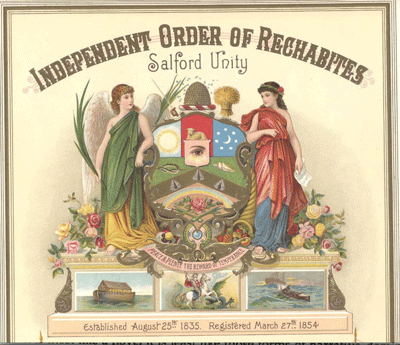
Figure 12: Rechabite Emblem, detail from membership certificate, Salford, undated (used with permission)
The reiteration of tropes and symbols created a representational code in the Temperance Movement, as in any interest or pressure group. It is of particular interest to historians of the nineteenth century, however, for several reasons. Temperance campaigners formed one of the most significant of the Victorian social amelioration movements, which not only directly affected the lives of millions of adult and child members during the course of the century, but contributed significantly to the wider cultural landscape. Phrases and concepts such as “signing the pledge” or being a “water-drinker” entered common understanding as well as common parlance. Temperance was frequently made visible, even to non-abstainers, in its representations in newspapers and magazines, in lantern slide shows, and around villages, towns and cities with Temperance Halls, Bars, Billiard Rooms and Hotels. And the vigour of its propaganda, briefly outlined in this article, gives a fascinating insight into nineteenth-century ingenuity and enterprise.
published October 2012
HOW TO CITE THIS BRANCH ENTRY (MLA format)
McAllister, Annemarie. “On the Temperance Movement.” BRANCH: Britain, Representation and Nineteenth-Century History. Ed. Dino Franco Felluga. Extension of Romanticism and Victorianism on the Net. Web. [Here, add your last date of access to BRANCH].
WORKS CITED
Anon. “May-day Demonstrations.” The Band of Hope Chronicle (June 1910): 56. Print.
Anderson, Benedict. Imagined Communities: Reflections on the Origin and Spread of Nationalism. London: Verso, 1991. Print.
Beetham, Margaret, “Periodicals and the New Media: women and imagined communities,” Women’s Studies International Forum 29 (2006): 231–40. Print.
Gourvish, T.R. and R. G. Wilson. The British Brewing Industry, 1830-1980. Cambridge: Cambridge UP, 2008. Print.
Harrison, Brian. “Drink and Sobriety in England 1815-1872. A Critical Bibliography.” International Review of Social History 12 (1967): 2. Print.
Harrison, Brian. Drink and the Victorians: The Temperance Question in England 1815 1872. Keele: Keele UP, 1994. Print.
Harrison, Brian. “Press and Pressure Group in Modern Britain.” The Victorian Periodical Press: Samplings and Soundings. Ed. Joanne Shattock and Michael Wolff. Leicester: Leicester UP, 1982. 261-95. Print.
Livesey, Joseph. Bands of Hope, and the Care of Children. Preston: Livesey, no date. Print.
Livesey, Joseph. The Life and Teachings of Joseph Livesey, Comprising his Autobiography with an Introductory Review. . . by John Pearce. London: National Temperance League, 1885. Print.
McAllister, Annemarie. “The Lives and the Souls of the Children: The Band of Hope in the North West.” Manchester Region History Review 21 (2011): 1-18. Print.
Nicholls, James. The Politics of Alcohol: A History of the Drink Question in England. Manchester: Manchester UP, 2009. Print.
Shiman, Lilian Lewis. Crusade Against Drink in Victorian England. London: Macmillan, 1988.
ENDNOTES
[1] For figures, see the annual reports of the UK Band of Hope Union. Further details of the Band of Hope are given in Shiman (1988) and McAllister (2011).
